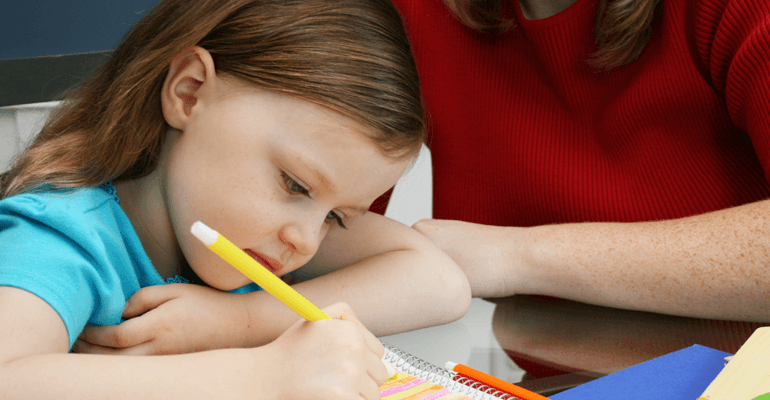All of us spend at least some time wondering who we are and why we are. For a child who has faced many moves and a chaotic life before adoption, these are difficult questions to answer. But as elusive as the answers may be, they are vital as the child matures into adulthood. Parents can use the following techniques, from our book, Adopting the Hurt Child, to help any child adopted beyond infancy, whether from U.S. foster care or another country, to understand and integrate his past in post-placement life.
As for the correct time to start this conversation, the answer is now. Ideally, the talks should begin before a child’s adoption, but it’s never too late to start. In fact, it is wise to revisit some of these activities over time as a child’s mental, emotional, and cognitive abilities evolve. A parent’s response to the question, “Where do babies come from?” would differ if asked by a two-year-old or a 16-year-old. The same should be true when discussing adoption, the child’s past, and his resulting emotions.
The Timeline
This exercise can help a child (and his new parents) visualize the moves he’s been through, and reinforce the security of his place in his forever family.
- Take a few sheets of graph paper and cut them into two or three horizontal strips. Tape enough strips together to make a row at least 300 squares long. Each square represents one month in your child’s life, from birth until age 25. This will help to dispel the 18-and-you’re-out mind-set that many foster children have.
- Have your child select a color for each of his placements. If, for example, he chooses blue for his birth mother, and was with her for eight months, he colors eight squares blue. If he was removed and returned, he uses the same color for each stay.
- Underneath the boxes, you or your child should write who lived there, why the child was moved, and any other available information. Continue coloring and writing notes up through the time he’s been in your home.
Sixteen-year-old Barbara, adopted at age eight, began acting out as a teen. After making a timeline, she sat back and said, “I’ve lived here longer than anywhere. I don’t need to act like them anymore,” pointing at the time she spent with her birth parents and in foster homes. “I need to act like them,” she said, indicating the 96 squares that represented her time with her family. Her tumultuous behavior did not smooth out overnight, but it was a way for Barbara to start a new way of thinking.
You can use the timeline as an ongoing ritual. Take it out periodically, so your child can color more time spent with your family. This provides an opportunity to discuss the past and an affirmation of the permanence of your family.
Photographs
If we knew we had only a few minutes to snatch possessions before a fire, most of us would take family snapshots — an irreplaceable reminder of our past. When a child doesn’t have pictures of herself at younger ages, which is often the case for adopted children, she may have trouble conceptualizing herself as an infant or a toddler.
Most children in the foster system have no photographs, but some detective work often uncovers at least a few. Start at the beginning.
- Some hospitals keep a newborn photo in the child’s file.
- Schools may have a photo of the child stapled to his folder.
- Birth relatives can sometimes be contacted through an agency, and they may be willing to exchange baby pictures for a current snapshot.
- Foster families and social service agencies may have photos of your child.
If you aren’t permitted to take the original, ask if you can scan the image or make a high-quality color copy. At the very least, perhaps you can take a close-up photo of the original with a digital camera.
If you adopted internationally, you probably received at least one photo of your child with your referral. You may be able to contact your adoption agency, or perhaps the orphanage, to ask whether any others exist. Photos of foster parents or orphanage workers can also be helpful for children.
There is no reason why a child should not have current photos of his life. If you’re preparing to adopt from foster care, take photos of the child, his foster home and family, his school, and friends. If your child is old enough, it can be revealing to turn a camera over to him to capture what he deems important.
You can also use photos to welcome a new child. Compile an album with snapshots of your family members, your home, your pets, and places you spend time, like your church or the school the child will attend, and present it the first time you meet the child.
The Lifebook
This is perhaps the most important, least implemented, and seldom understood tool available to help a child. A lifebook is a process, not a finished product — an autobiography that incorporates the discovery and discussion of a child’s life experiences.
You can create a lifebook on video or audio files, but the most common form is on paper. The easiest system is to use a three-ring binder with plastic page protectors. This allows for flexibility, enabling the child to make additions to any section as new information becomes available. The child can decorate the pages with crayons, markers, stickers, his own artwork, and any photos you have. The pages could also be created on a computer.
Like all autobiographies, a child’s lifebook should start at the beginning and include the following pages:
Title Page: Include a current photo of your child and whatever title he chooses — “Ty’s Life Story,” “All About Ty,” “The Stupendous Ty.”
Birth: If you have it, include a copy of his original birth certificate. If you don’t, provide any information you know. You can look up the day of the week of, and the weather on, your child’s birth date online. Include a baby photo of your child if you have one; if not, include a photo of the hospital where he was born. If you don’t have any information or photos, don’t cut out a photo of another baby from a magazine or download one from the Internet. A young child might believe you, but he will ultimately become confused. A line drawing or an illustration of a baby works better, as it is obviously not your child.
Birth Parents: From there, discuss with your child everything you know about his birth mother and birth father. Help your child compute the time that has gone by, since children “freeze” people at the time of separation. If his birth mother was 20 when he was born, and 24 when he entered foster care, and he’s now eight, help him figure out how old she is now.
Talk about the kind of parenting skills his birth mother had, and encourage him to share positive memories of her. You can prompt these by asking questions like, “Was she funny?” “What sorts of things do you remember doing with her?” “Did she sing?” Recording any good memories your child has about his birth family is important, as the memories may fade and the information contained in Department of Social Services records is likely to be negative.
Reasons for Adoption: If a child’s lifebook records only the good aspects of life with his birth family, however, and he remembers hunger, anger, or confusion, no purpose is served. Balance the positive memories with a discussion of any problems you know about in his birth home.
Birth Siblings: Include any information you know about your child’s birth siblings — names, birth dates, where and with whom they’re living — as well as any photos you have.
Foster Families: If your child has stayed in other foster homes, include any information he remembers about them.
Significant Dates: Include dates of any court actions you know of, the day you met, the day he moved to your home, and the day you finalized his adoption.
All About Me: Encourage your child to add anything else he would like. He could list likes and dislikes, sports, hobbies, and important memories. He can draw pictures of people and things he remembers.
The best lifebooks are the ones that are made with the child. If he refuses to participate, or is too young to get involved, a parent can assemble a book for him. The only bad lifebook is the one that is never made. Unlike a family scrapbook, a child’s lifebook should not be shared with friends and extended family, but should be respected as a personal part of the child’s world.
The Water Exercise
This activity can help a child age five or older to integrate his past with his present. If it’s performed before adoption, it can help a child understand why adoption makes sense for him. After an adoption, it can help relieve a child’s anxiety that falsely links acceptance of his new family with rejection of the other families he’s known. To perform it, you’ll need a large pitcher, several glasses in varying sizes, and water. Your conversation will probably go something like this:
PARENT: This water pitcher represents you at birth. What’s inside?
CHILD: (peering inside) Nothing.
PARENT: That’s right. We are all born needing food, clothing, love, and lots more. Now, when you were born, you went home from the hospital with your birth mom, right?
CHILD: Right.
PARENT: And you lived with her for three years. That’s a long time. (Choose a large glass and fill it with water.) Your mom gave you food, changed your diapers, and loved you — she gave you all she could. (Dump the glass into the pitcher.) But are all of your needs met? Are you full? (Indicate the partially filled pitcher.)
CHILD: No.
PARENT: You’re not full because she couldn’t keep you safe (or feed you — give some details from your child’s story). So you went to the Smiths and stayed there for two months. (Fill a much smaller glass with water.) They gave you all they could. (Indicate the glass and dump it into the pitcher.) Now, which part is the Smiths and which part is your birth mom?
CHILD: (Looks into the pitcher and registers amazement.)
PARENT: You can’t tell because it’s all mixed up inside of you. (Continue to fill glasses and add water to the pitcher for any subsequent placements, talking about the length of time the child spent in each home and the positive and negative aspects of each move. Be careful not to fill the pitcher completely.) We don’t want you to forget any of these people. We love you and know that all of these people made you who you are. We want to add to this, not replace it, and fill you up with love (fill the pitcher under the kitchen faucet), so you have enough to fill you and more for everyone you care about (let the pitcher overflow).
The Family Tree
Making a family tree that includes both the birth family and your family can help a child sort people out and gain perspective on his past and present. Include as much information as you can — each individual’s name, date of birth, and relationship to the child.
All young children have difficulty understanding that Grandpa is Dad’s dad. For a child separated from his birth family and entering a new one, the confusion is greater still. To help your child understand who’s who, make notations under each family member’s name on the tree. For example: Bruce Jones — your uncle, your birth mother’s brother; Tom Brown — your grandfather, your adoptive mom’s dad.
Movie Night
Movies can help children process ideas and feelings and open up discussion. Pinocchio is a classic family film that addresses several themes, including adoption, lying, and lack of conscience. A follow-up discussion could lead to questions like, “So, Amy, if the story of Pinocchio were true, how long would your nose be?” This will probably be followed by giggles, and can lead into a gentle conversation — a pleasant alternative to arguments and defensiveness. Watching and interacting with other people’s stories can spark a child’s memories and get her to open up about her past feelings, losses, and happy memories.
Written Correspondence
As more communication shifts online, we all still enjoy receiving the rare card or letter in the mail. Most of the children we’re talking about have never had this experience. During the pre-adoption period, you could send postcards to the child between visits, to enrich the time you spend apart. After the child moves in, perhaps his former foster parent could send a card wishing him the best in his new home.
Many greeting card companies have lines designed for parents to send to their child “just because” — complimenting him on a clean room, a good report card, or just telling him that he’s special or is a fun kid — that are wonderfully appropriate for hurt children. Written communication can provide kids with keepsakes, perhaps for the first time in their lives, creating a past for them to hold onto as they move into their future.
Keck and Kupecky co-authored Parenting the Hurt Child and Adopting the Hurt Child, from which this piece was adapted. © 1995, 2009 by Gregory C. Keck and Regina M. Kupecky. Used by permission of NavPress, Colorado Springs, CO. All rights reserved. For copies call (800) 366-7788 or visit navpress.com.



